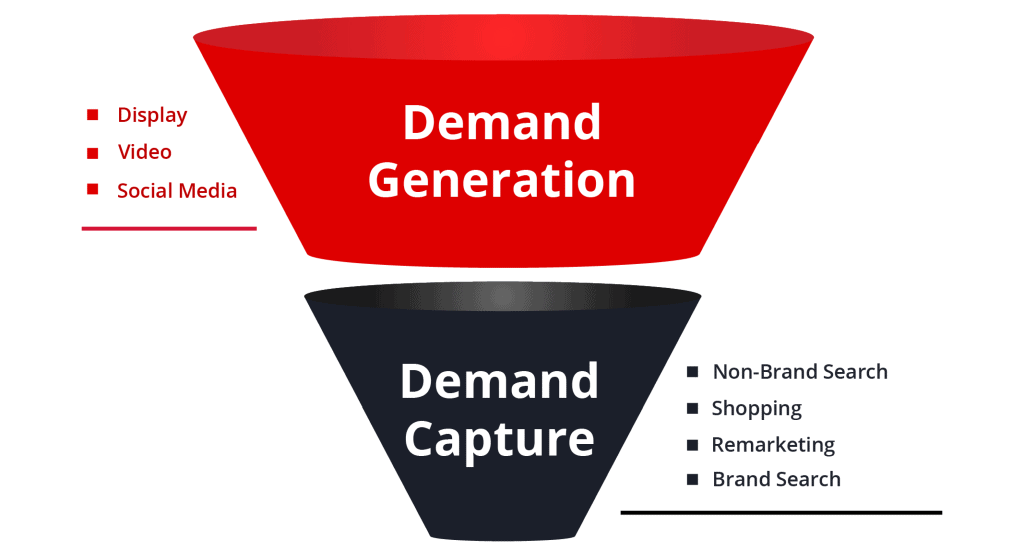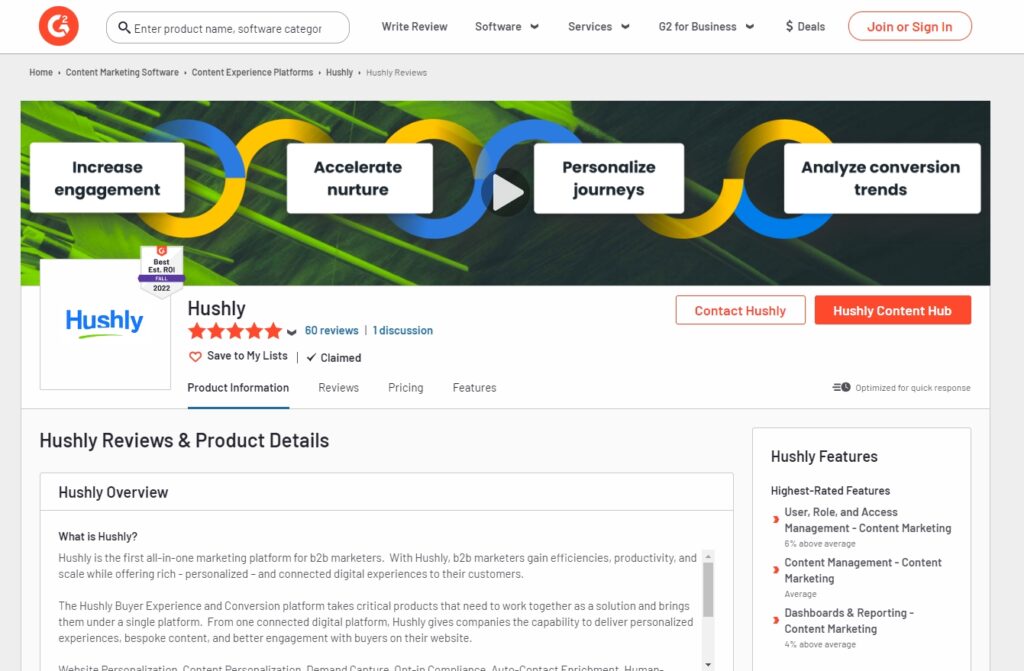Filters
Content Type
Topic
What is Demand Capture?
A powerful tool for B2B marketers and sales teams, demand capture is a method of understanding who your ideal customers are, what they need, and how to target them. Believe it or not, roughly 79% of all marketing leads never convert into sales opportunities. Why? Because too often, brands focus their attention on the wrong people.
Instead of targeting those most likely to convert, they focus on those who are the easiest to get in front of. This is problematic for several reasons, the biggest of which is that it results in low conversions, impacting your bottom line.
Instead of attempting to reach a broader audience, you need to narrow your focus to target only those who are ready to buy – that’s where demand capture comes into play.

What is Demand Capture in Marketing?
Demand capture is a method of leveraging data and insights to identify prospects ready to convert into customers. It involves analyzing intent data to find those most likely to convert and then creating targeted campaigns tailored to their needs.
Is There a Difference Between Demand Capture and Demand Generation?
Yes. In a nutshell, demand generation focuses on building demand for your products or services, whereas demand capture is a strategy for actually converting those leads into customers. They’re two halves of the same process.

Source: Taikun Digital
How Does Demand Capture Work?
While approximately 91% of marketers say that lead generation is their top priority, only about 3% of your market is actively buying, with another 56% saying they’re not ready to buy. That means you need to be proactive in identifying who those 3% of buyers are so you can target them with the right information to convince them that you’re the answer to their problem.
The end goal of demand capture is to capture the attention of that small percentage of buyers who are actively looking for a solution to their problem and persuade them to buy from you. The only way to do that is through intent data.
Intent data helps you understand your customers’ and prospects’ underlying motivations, needs, and interests. It’s collected from various sources, including web search activity, social media interactions, and email exchanges. By analyzing this data, you can uncover insights that can help you tailor your messaging to meet your customers’ needs better.
Here are some ways you can collect intent data:
- Use advanced analytics tools that track and analyze user behavior on your website.
- Use user behavior data to create personas and identify the types of customers you want to target.
- Use keyword research to uncover trends in search terms that can help you better understand your customers’ interests.
- Analyze the conversations and interactions of your customers on various social media platforms to gain valuable insights into their interests, needs, and preferences.
While demand capture seems like it could be the perfect solution to your marketing challenges, it has its drawbacks, which is why it’s essential to understand the pros and cons of this approach.
Advantages of Demand Capture
In addition to better understanding customer needs, demand capture can do the following:
- Help businesses identify new opportunities for growth. By collecting data on customer behavior and interests, companies can uncover trends in search terms and identify new markets to explore.
- Personalize customer experiences. By collecting data on customer behavior and interests, businesses can tailor customer messages and offers based on their individual preferences. This can help increase engagement and customer loyalty, resulting in higher conversion rates and improved customer retention.
Disadvantages of Demand Capture
Some of the disadvantages of demand capture are:
- Can be costly and time-consuming. It requires businesses to invest in technology and resources to track necessary customer data, which can add up over time. Additionally, it can be difficult to interpret this data and make sense of it to make informed decisions.
- Can be seen as intrusive. By collecting customer data, businesses can gain access to personal information that customers may want to keep private. This can lead to privacy concerns and prevent customers from interacting with the company. One recent example of this was the debate over the death of third-party cookies in the online advertising industry. While many would argue that these cookies were intrusive and an invasion of privacy, others believed they were essential for the industry’s success.
- Can be unreliable. It relies on customers providing accurate and honest information, which may not always be the case. Additionally, customer behavior can vary widely, making it difficult to predict and analyze customer trends accurately.
4 Demand Capture Methods That Work
Demand capture may seem a bit daunting initially, especially if you’ve never given it much thought. The good news? You’ve probably already been implementing some of the most common demand capture methods without even realizing it.
Here are four of the most common demand capture methods that can help you make more sales and retain more customers:
1. Personalize Your Website for Your Ideal Customer Profile
Personalizing your website according to your ideal customer profile can help you create a personalized experience for your customers, making them feel like their needs are being met and valued. This can increase customer loyalty and engagement, with research proving that your customers are more influenced by brands that make them feel valued, appreciated, and respected.
2. Build a Positive Reputation
Another demand capture tactic you may already be implementing is creating a positive brand reputation via social media, customer review sites, and forums. Positive word of mouth goes a long way in capturing the attention of your target market.
Studies show that 90% of all buyers are more likely to convert after reading positive reviews, with 92% of B2B buyers taking it a step further, saying they’re more likely to purchase after reading a trusted review.
These reviews can come from just about anywhere. Buyers are more likely to trust a brand that has positive reviews from multiple sources, including customer reviews and reviews from well-known review sites.

Source: G2
3. Paid Search Campaigns
With paid search campaigns, you can target specific customers based on the keywords they use, their demographic information, or even their location. This allows you to reach a highly targeted audience, ensuring that those who are already searching for the solutions you have to offer are seeing your message.
4. Use Intent Data for Retargeting
Finally, demand capture allows you to take the intent data you’re already collecting and use it for retargeting. Retargeting allows you to stay in front of your audience and remind them of your brand and the services you have to offer. This can be done through display ads, social media, or even email campaigns.
Demand Capture Made Simple with Hushly
Demand capture is an integral part of an effective marketing strategy, as it provides brands with valuable customer information to help them better understand their needs and preferences. However, it can be difficult to accurately predict and analyze customer trends.
That’s where Hushly can help. Our demand capture tools help ensure that brands can get the most out of their efforts and turn them into success.
Ready to see how demand capture can help your business? Request your demo today.
The post What is Demand Capture? appeared first on Hushly.



